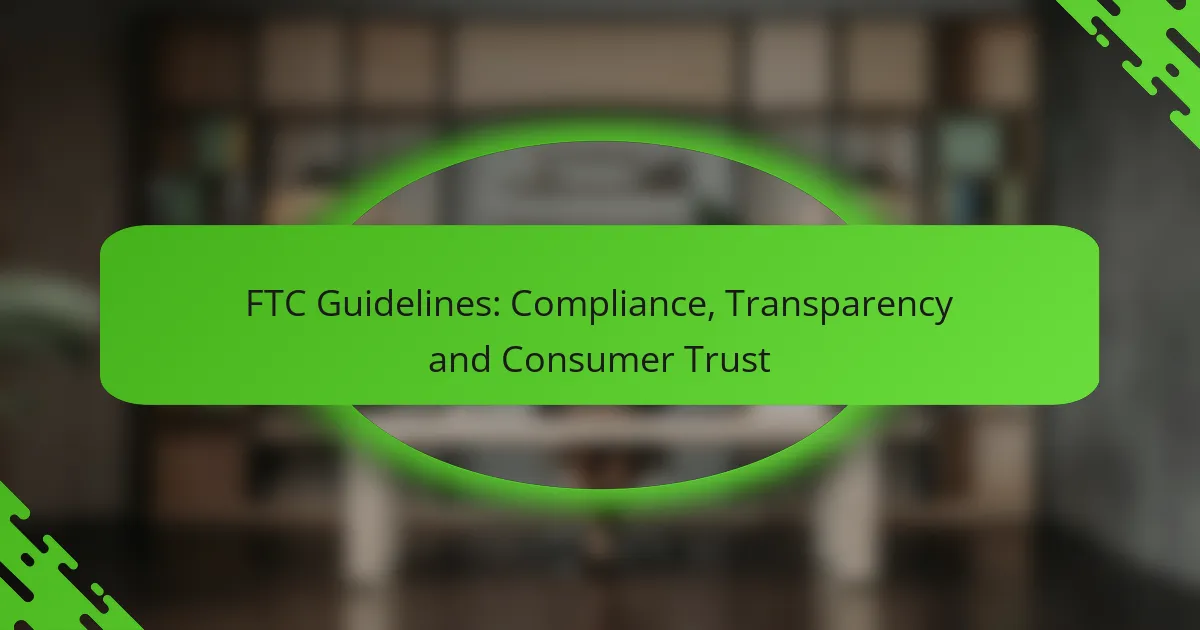In today’s digital landscape, organizations face the critical responsibility of managing user data with care and integrity. Best practices emphasize minimizing data collection, ensuring transparency, and implementing robust security measures to comply with legal obligations and foster user trust. Additionally, ethical standards demand respect for privacy and accountability, guiding organizations to prioritize fair usage and transparency in their data handling practices.

What are the best practices for user data responsibility?
Best practices for user data responsibility focus on minimizing data collection, ensuring transparency, managing user consent, implementing robust security measures, and conducting regular audits. These practices help organizations comply with legal obligations while fostering trust with users.
Data minimization techniques
Data minimization involves collecting only the information necessary for a specific purpose. This reduces the risk of data breaches and enhances user privacy. For example, if a service only requires an email address for account creation, it should not ask for additional personal details unless absolutely necessary.
Organizations should regularly review their data collection processes to identify and eliminate unnecessary data requests. Implementing forms that default to minimal data requirements can encourage users to provide only essential information.
Transparency in data collection
Transparency in data collection means clearly informing users about what data is being collected and how it will be used. This can be achieved through straightforward privacy policies and user notifications. For instance, a website should outline its data practices during the sign-up process.
Providing users with easy access to this information builds trust and allows them to make informed decisions. Regular updates to privacy policies, especially when practices change, are crucial for maintaining transparency.
User consent management
User consent management involves obtaining explicit permission from users before collecting or processing their data. Organizations should implement clear opt-in mechanisms, ensuring users understand what they are consenting to. For example, checkboxes for data sharing should be unchecked by default.
It is essential to provide users with options to withdraw consent easily. This can be facilitated through user account settings or direct communication channels, reinforcing the user’s control over their personal information.
Data security measures
Implementing strong data security measures is vital for protecting user information from unauthorized access. This includes using encryption, secure servers, and regular software updates. For example, employing SSL certificates for websites helps secure data transmitted between users and servers.
Organizations should also train employees on data security best practices to minimize human error. Regularly testing security systems through penetration testing can help identify vulnerabilities before they are exploited.
Regular audits and assessments
Conducting regular audits and assessments of data practices ensures compliance with legal obligations and identifies areas for improvement. These audits should evaluate data collection methods, security measures, and user consent processes. Scheduling these assessments annually or biannually can help maintain accountability.
Organizations should document audit findings and implement corrective actions where necessary. This proactive approach not only enhances data responsibility but also demonstrates a commitment to user privacy and security.

What are the legal obligations for user data protection in the US?
In the US, legal obligations for user data protection vary by state and sector, primarily focusing on privacy laws like the CCPA and sector-specific regulations like HIPAA. Organizations must ensure they comply with these laws to protect user information and avoid penalties.
Compliance with CCPA
The California Consumer Privacy Act (CCPA) mandates that businesses collecting personal data from California residents must provide transparency about data usage and allow users to opt-out of data selling. Companies must inform users about their rights, including the right to access, delete, and receive information about their data.
To comply, businesses should implement clear privacy policies, establish processes for data requests, and ensure they have mechanisms for users to opt-out. Regular audits can help identify compliance gaps and improve data handling practices.
Adherence to GDPR for EU users
While GDPR is a European regulation, US companies serving EU users must comply with its stringent data protection requirements. This includes obtaining explicit consent for data collection and processing, ensuring data portability, and allowing users to access and delete their data.
Organizations should conduct data protection impact assessments and appoint a Data Protection Officer (DPO) if necessary. Non-compliance can lead to significant fines, emphasizing the importance of understanding and implementing GDPR standards.
Understanding HIPAA for health data
The Health Insurance Portability and Accountability Act (HIPAA) sets the standard for protecting sensitive patient information in the healthcare sector. Covered entities, including healthcare providers and insurers, must implement safeguards to ensure the confidentiality and integrity of health data.
Key requirements include conducting risk assessments, training staff on data privacy, and establishing protocols for data breaches. Organizations must also ensure that any third-party vendors comply with HIPAA regulations through Business Associate Agreements (BAAs).

What ethical standards should guide user data handling?
Ethical standards for user data handling focus on respecting privacy, ensuring fair usage, and maintaining accountability. Organizations should prioritize transparency and integrity in their data practices to build trust with users.
Respecting user privacy
Respecting user privacy involves safeguarding personal information and ensuring that data collection is transparent. Organizations should inform users about what data is collected, how it will be used, and who it will be shared with.
Implementing strong data protection measures, such as encryption and access controls, is essential. Regular audits can help identify vulnerabilities and ensure compliance with privacy regulations like GDPR or CCPA.
Fair data usage practices
Fair data usage practices require that organizations only collect data necessary for their stated purposes. This principle of data minimization helps prevent misuse and protects user rights.
Organizations should avoid using data in ways that could harm users or violate their expectations. Providing users with options to control their data, such as opting out of certain data uses, enhances fairness and trust.
Accountability in data breaches
Accountability in data breaches means organizations must take responsibility for protecting user data and responding effectively when breaches occur. This includes having a clear incident response plan and notifying affected users promptly.
Establishing a culture of accountability involves training employees on data security and regularly reviewing policies. Organizations should also consider investing in cyber insurance to mitigate financial impacts from potential breaches.

How can businesses ensure compliance with data protection laws?
Businesses can ensure compliance with data protection laws by implementing robust policies and practices that align with legal requirements. This includes appointing data protection officers, conducting impact assessments, and training staff on data policies.
Implementing data protection officers
Appointing a data protection officer (DPO) is essential for organizations handling personal data. The DPO oversees compliance with data protection regulations, acts as a point of contact for data subjects, and ensures that data processing activities adhere to legal standards.
When selecting a DPO, consider individuals with expertise in data protection laws and practices. They should be independent, adequately resourced, and report directly to senior management to effectively influence data governance strategies.
Conducting impact assessments
Data protection impact assessments (DPIAs) help identify and mitigate risks associated with data processing activities. Conducting a DPIA is crucial when introducing new technologies or processing methods that may affect personal data privacy.
To perform a DPIA, outline the nature of the data processing, assess potential risks, and evaluate measures to mitigate those risks. This proactive approach not only helps in compliance but also builds trust with customers and stakeholders.
Training staff on data policies
Training employees on data protection policies is vital for ensuring compliance and fostering a culture of privacy within the organization. Regular training sessions should cover the importance of data protection, legal obligations, and practical steps for handling personal data securely.
Consider implementing a training schedule that includes initial onboarding and periodic refreshers. Use real-life scenarios and case studies to illustrate the impact of non-compliance, helping staff understand their role in protecting personal data.

What frameworks exist for evaluating data responsibility?
Frameworks for evaluating data responsibility include established principles and assessments that guide organizations in managing user data ethically and legally. These frameworks help ensure compliance with regulations and promote trust with users by prioritizing their privacy and data protection.
Privacy by design principles
Privacy by design principles emphasize integrating privacy into the development process of products and services. This proactive approach requires organizations to consider user privacy from the outset, rather than as an afterthought. Key aspects include minimizing data collection, ensuring data security, and providing transparency to users.
For example, when developing a new application, companies should limit data access to only what is necessary for functionality. This not only enhances user trust but also reduces the risk of data breaches and compliance issues.
Data protection impact assessments
Data protection impact assessments (DPIAs) are systematic processes used to evaluate the potential effects of data processing activities on user privacy. Conducting a DPIA helps organizations identify risks and implement measures to mitigate them before launching new projects or systems that involve personal data.
Organizations should perform DPIAs when initiating projects that involve high-risk data processing, such as large-scale surveillance or processing sensitive information. A thorough DPIA typically includes identifying data processing purposes, assessing risks, and outlining steps to address those risks.

How do emerging technologies affect user data responsibility?
Emerging technologies significantly reshape user data responsibility by introducing new methods for data collection, processing, and storage. These advancements raise critical considerations regarding privacy, security, and ethical usage of personal information.
Impact of AI on data privacy
Artificial Intelligence (AI) enhances data processing capabilities, allowing organizations to analyze vast amounts of user data quickly. However, this capability can lead to privacy concerns, as AI systems may inadvertently expose sensitive information or misuse data without proper oversight.
Organizations must implement robust data governance frameworks to ensure compliance with privacy regulations, such as the General Data Protection Regulation (GDPR) in Europe. This includes conducting regular audits, ensuring transparency in data usage, and obtaining explicit consent from users before processing their information.
To mitigate risks, companies should adopt best practices such as anonymizing data, limiting access to sensitive information, and using AI responsibly. Regular training for employees on data ethics and privacy laws can further strengthen an organization’s commitment to user data responsibility.










